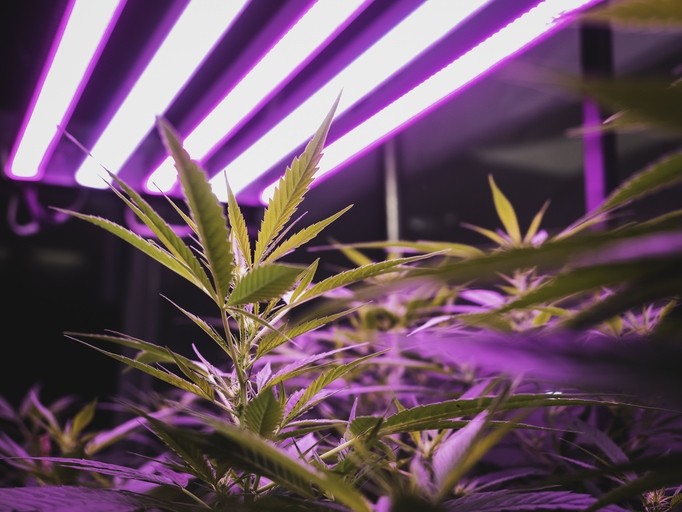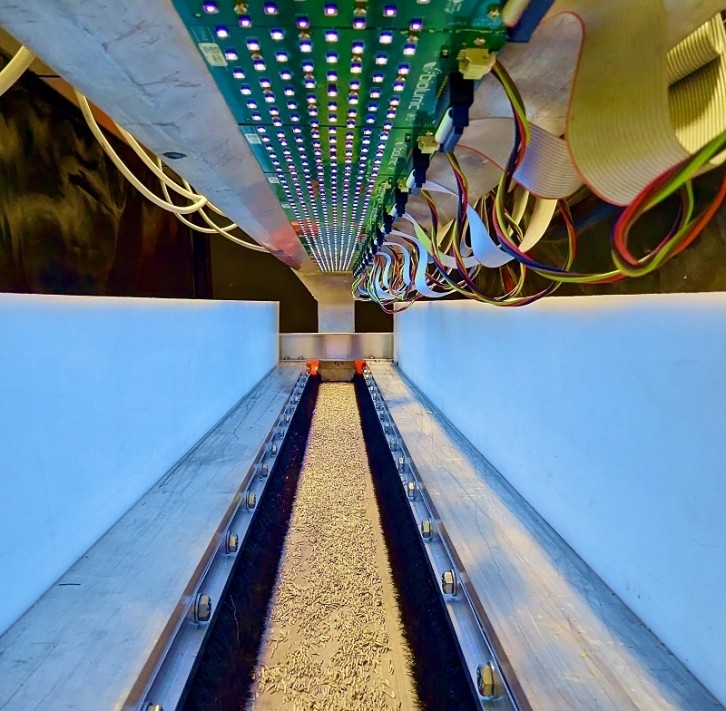UV light signalling: the next frontier in plant science?

With more sheep and cows than people, methane from livestock is a major contributor to New Zealand's greenhouse gas emissions. Reducing it is a big challenge which the country is working to address through policy targets, industry collaboration and innovation.
These efforts have received a fillip thanks to the news that AgriZeroNZ, a public-private joint venture aiming to fast-track emission reduction tools for Kiwi farmers, is investing up to NZ$5 million (US$3 million) in BioLumic, an agriculture biotech company using ultraviolet (UV) light to develop a low emissions farm pasture with increased productivity gains.
Based in Palmerston North on New Zealand's North Island and with offices in the US, BioLumic uses unique and proprietary UV light treatments which are applied to seeds to regulate their genetic expression and unlock their natural genetic potential.
These treatments have been found to significantly improve plant performance across 12 crops including corn, soybeans and rice - driving double-digit yield gains, improved quality and enhanced immunity to pathogens.
Increasing the lipids content of ryegrass to drive methane reduction
Thanks to the AgriZeroNZ funding, BioLumic will now expand its work with ryegrass, the most common forage pasture on New Zealand farms, with a goal to increase fat content and subsequently reduce methane emissions from animals that consume it. BioLumic already completed a round of initial work with ryegrass, proving the ability to regulate lipid composition with UV light treatments.
Animals with high-fat diets have lower methane emissions, such as grain-fed cattle in more intensive barn farming operations overseas. Some studies have found that a 1% increase in lipids (fat) content of feed will reduce methane emissions by 5%. BioLumic is targeting a 2-3% increase in the lipids content of ryegrass to drive methane reduction by over 12%.
“We’ve developed light recipes from billions of potential options that, with a precise application, can significantly increase plant performance across a range of crop varieties and growing conditions,” said Dr. Jason Wargent, the company’s chief science officer and a professor in plant biology at Massey University who founded BioLumic in 2013.
BioLumic CEO Steve Sibulkin added: “Our light treatments increase the fat composition of pasture grass species, improving livestock metabolic efficiency, which significantly reduces the methane emissions of pasture-raised animals like cattle and sheep."
The company is targeting wide scale use from 2027, with reduced regulatory barriers expected from the light treatment approach which will support a faster speed to market.
AgriZeroNZ’s chief executive Wayne McNee said the project could deliver a simple solution to reduce emissions on New Zealand’s predominantly pasture-based farms to help them meet the global customer demands for emissions reduction, protect trade agreements and achieve New Zealand’s climate goals.
“Pasture is the foundation of the business for Kiwi farmers, so a pasture solution to curb methane and boost productivity will be an important option in their toolkit to reduce emissions,” he said.
New Zealand has the highest methane emission rate per person in the world, at 0.6 tonnes per year – six times the global average. Methane emissions make up over 40% of New Zealand's total emissions. The country therefore has ambitious targets to reduce biogenic methane emissions by 10% below 2017 levels by 2030 and by 24-47% below 2017 levels by 2050.
“There is a very real and very disruptive risk to our dairy and meat sectors from the need to reduce emissions but there is also a very real opportunity to stay among the most efficient producers of dairy products and meat in the world if we can get the right tools to farmers,” McNee said.
High times ahead?
Last year, BioLumic announced a partnership with US seed producer Gro Alliance to bring its UV light seed treatment tech to the global row-crop seed industry. More tie-ups are in store, Sibulkin told us. “Unlike conventional methods that resort to gene modification or chemical treatments, BioLumic's approach activates gene expression without altering the plant's DNA or introducing additional products,” he said. This makes it an environmentally sustainable and scalable solution “not constrained by regulatory barriers or consumer concerns”.
Its sustainable rice programme, funded through a US$2.1 million grant from the Bill and Melinda Gates Foundation, which aims to help India’s rice farmers, is ‘progressing rapidly’, he told us. “We have already catalogued unique light response gene markers that improve rice seedling emergence and vigor by more than 15%,” he said. “These two traits are critical to improved weed competitiveness in rice production, allowing farmers to grow rice without flooding their fields, a practice called Dry Direct Seeded Rice (DDSR) that could reduce rice methane emissions by as much as 90%, as well as significantly reduce water use and alleviate harsh working conditions in smallholder farms.”
It is also collaborating with the cannabis sector, which is using BioLumic's light recipes to unlock improved cannabis cultivar genetics targeted toward more compelling consumer products and wellness benefits. New partnership announcements are pending, including with Fluence, which provides light solutions to commercial cannabis cultivators.

The company is also in the early stages of enterprise partnerships aimed at increasing the yield of in-bred seed production, seeds used for breeding hybrid seeds. “Because a large part of BioLumic’s competitive advantage lies in how rapidly we can accelerate the crop innovations farmers desperately need, we have focused on commercialising where we can have the most impact and bring the most value quickly, collaborating with already well-established enterprises within the agricultural supply chain,” Sibulkin explained.
“We don’t sell seed; we create value by activating value-added traits in row crop seeds. We use a subscription or pay-per-use model that can scale up or down depending on demand, working with our partners to tailor a program that makes the most economic sense for their goals and where BioLumic can stack value with other crop and seed inputs without requiring drastic changes to production systems.”
The benefits of BioLumic’s in-seed light treatment process are verified to last up to six months. It is currently undergoing testing that will extend the shelf life up to a year from treatment. “Our commercialisation strategy for in-seed production is focused on partnering with seed producers, like Gro Alliance, that can rapidly deploy customised seed treatments at the seed conditioning stage along with other applied seed treatments, so the benefits are imbedded for the grower,” said Sibulkin.
“For treating of transplants, applicable in industries such as cannabis and strawberry production, our light treatments are administered to young plants in a baker’s-style treatment rack, immediately unlocking growth responses that continue throughout the plant’s life cycle.”

The science behind UV light signalling
Seeds and young plants possess an innate growth development programme regulated by light known as photomorphogenesis, which initiates distinct plant development changes at multiple stages of plant life cycles.
Photomorphogenesis mediates the biochemical pathways regulating plant growth, natural plant defense responses to pest, disease, and abiotic stressors, increased photosynthetic capability and efficiency, and many other processes essential to crop growth and quality.
BioLumic says it has commercialised the science of photomorphogenesis by harnessing light waves invisible to the human eye to activate valuable traits in seeds and young plants. Specifically, it is exploiting recently discovered natural plant receptors to ultraviolet B (UVB) light waves. UVB light is a powerful biological catalyst for both plants and humans. However, it was not commercially accessible before the advent of LED technology and the ability to control and deploy UV light waves. Most solar UVB light, critical for adequate vitamin D levels in humans, is filtered out by the atmosphere.
“We are the first and only company to create a commercial platform using light signalling as a programming language to unlock plants’ natural genetic potential,” declared Sibulkin. “This frontier innovation has the potential to trailblaze a revolutionary shift in agricultural production and food system sustainability.”
He puts its potential on par with the Green Revolution sparked by Norman Borlaugh’s high-yielding, disease-resistant wheat varietals.
BioLumic has, for example, catalogued the world’s only database of plant trait responses triggered via light signalling, including validating more than 200 light signalling-induced traits across 12 key agricultural crops, and developed an LED hardware system for implementing light signalling treatments in plant nurseries and seed processing and treatment centres.
The science of photomorphogenesis is not new, but the BioLumic approach is, Sibulkin insisted. “Outside of scientific community, most people have never heard of light signalling. Or they confuse our brief, one-time treatment technology with growing plants under UV lights in indoor production systems. Once we overcome the knowledge barrier, BioLumic’s light treatment technology is poised to solve planetary-scale global challenges across major crops, grown in the field and indoors, for farmers large and small.”








